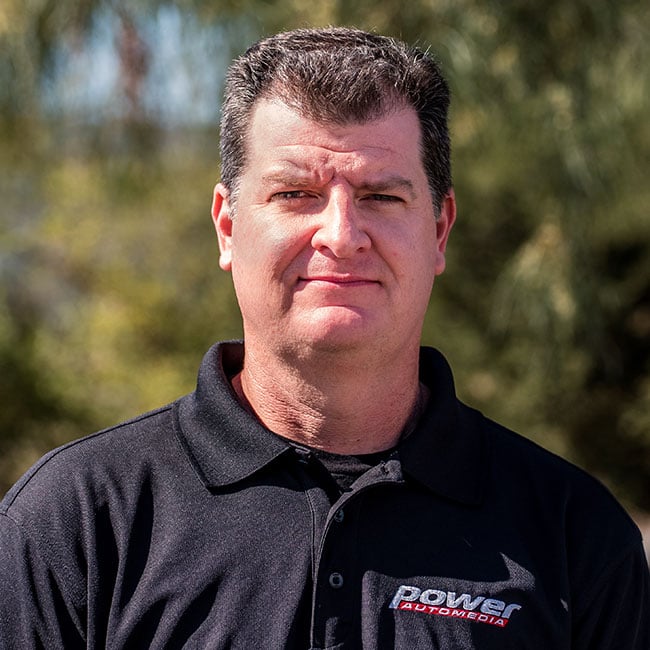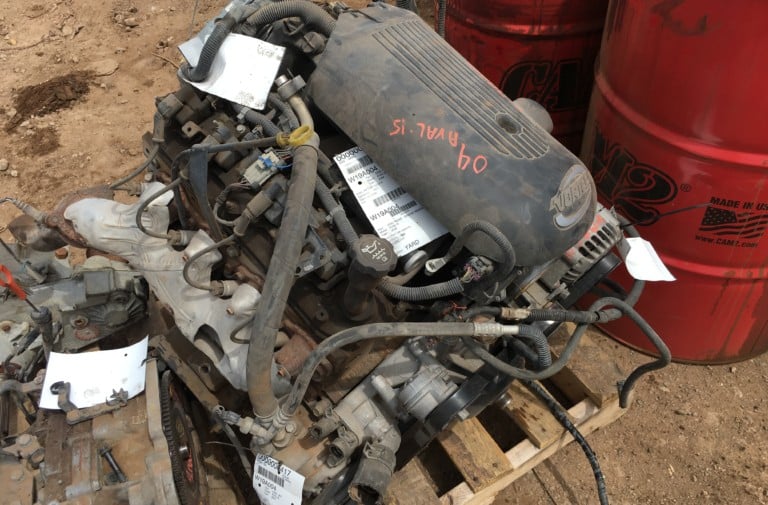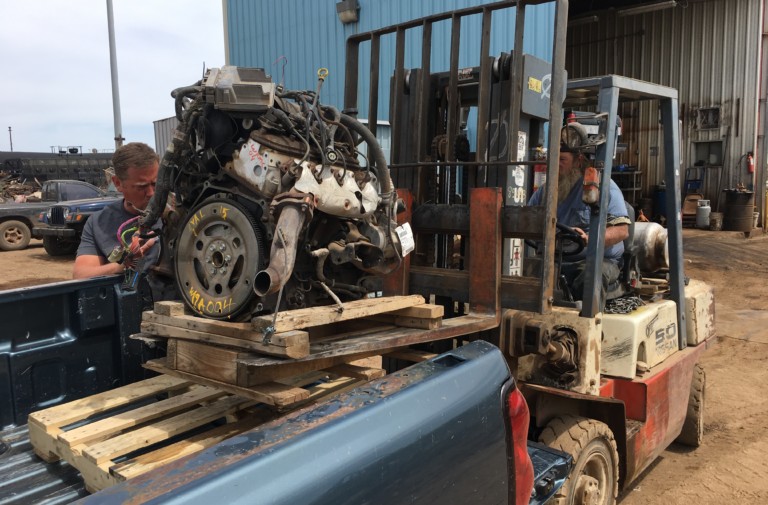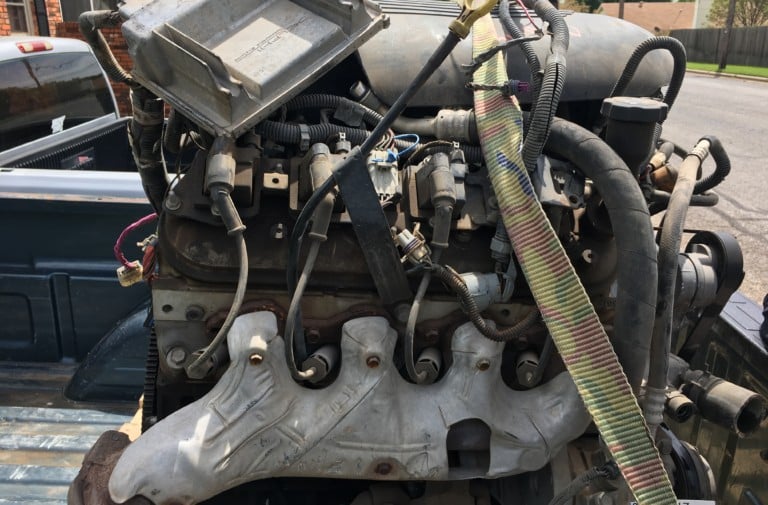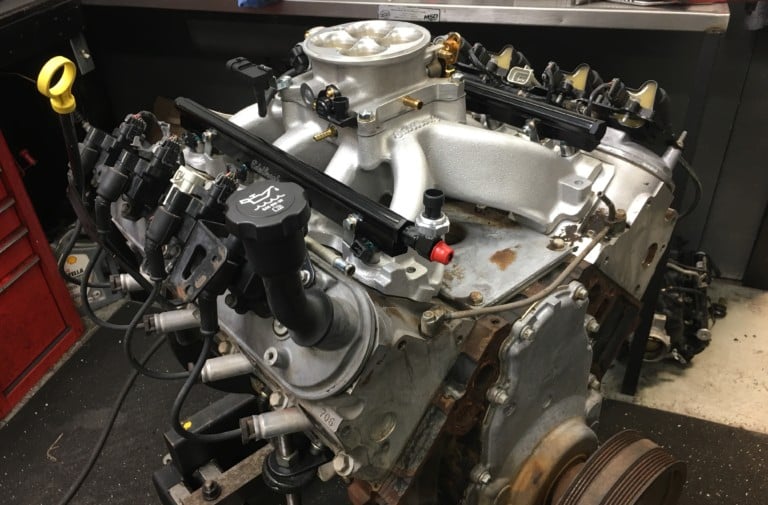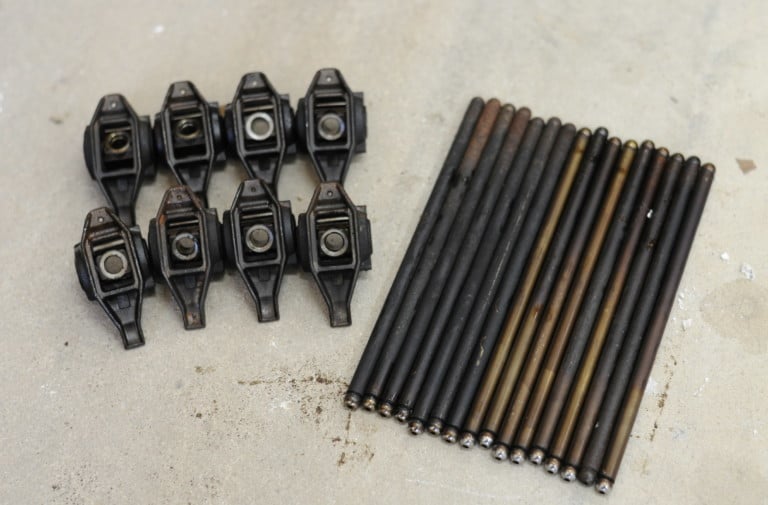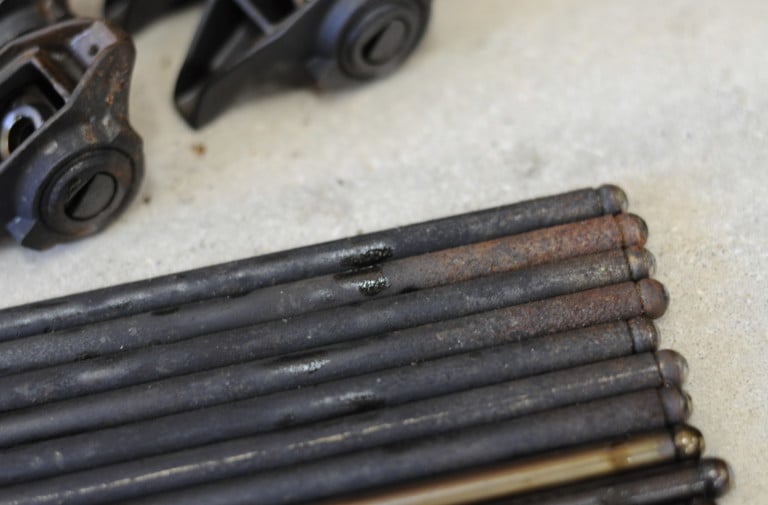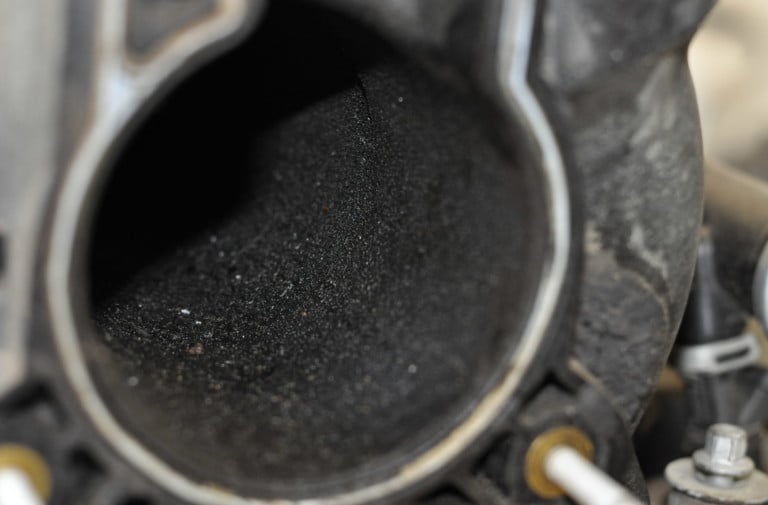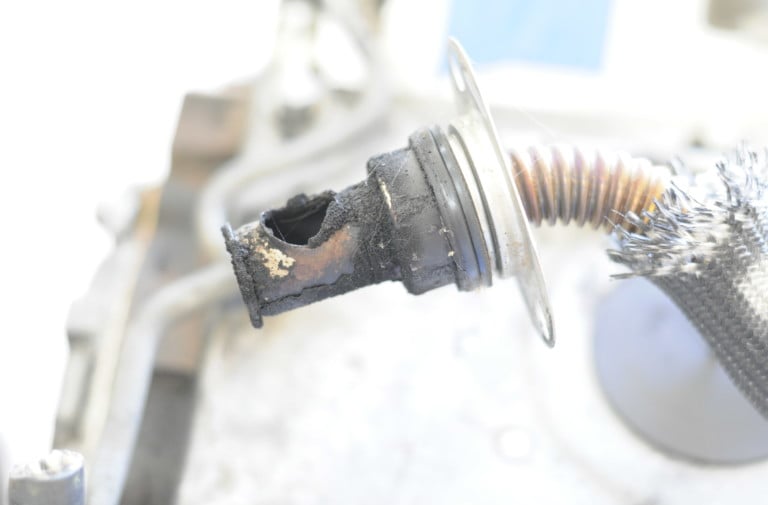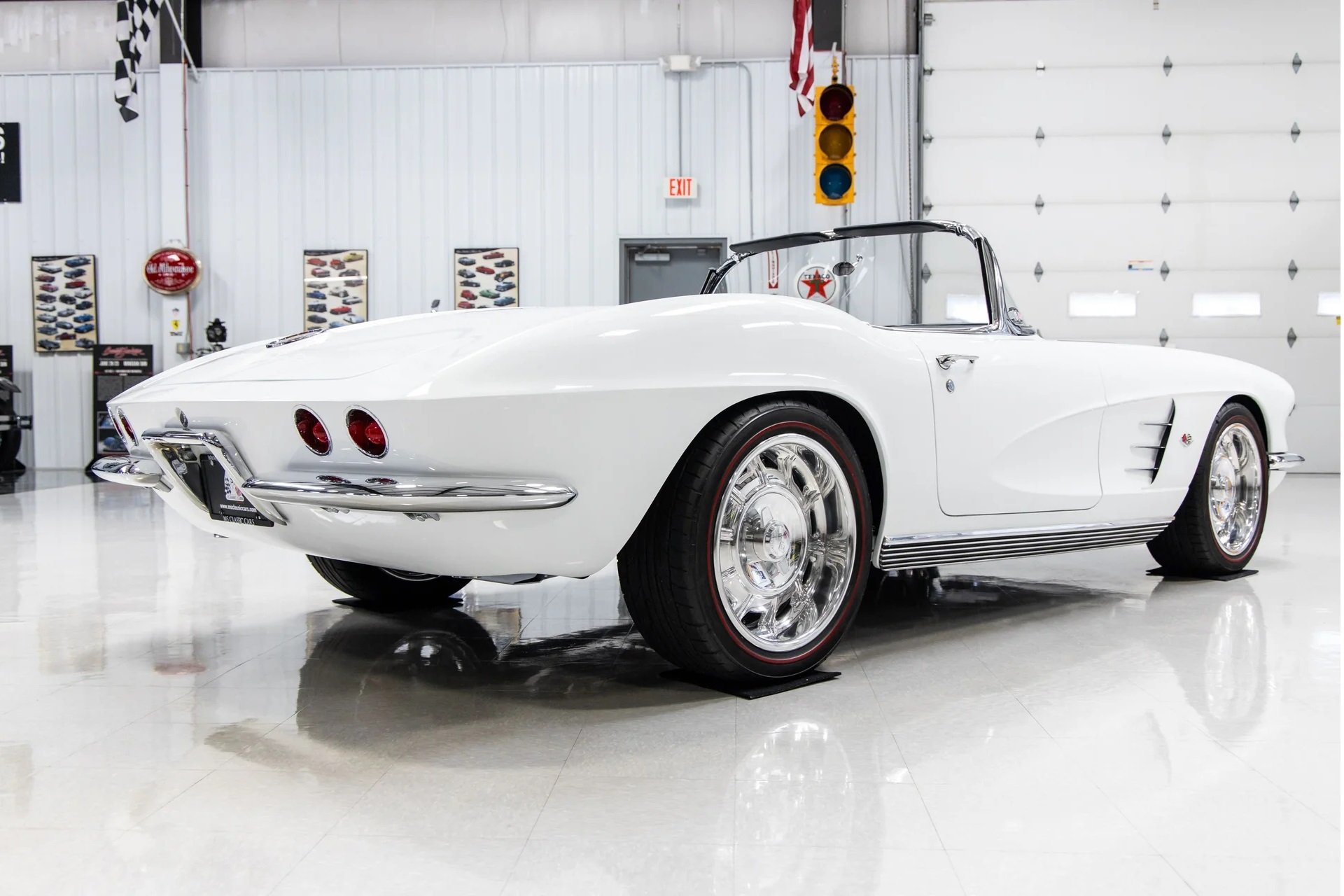It’s no surprise that the LS engine is one of the hottest trends on the market for a swap. No other powerplant comes close to the performance of this engine — for the price. Plus, you can find them just about anywhere from the junkyard, Craigslist, even Facebook has tons of them just waiting to be scooped up. In this article, we are going to give you a few tips and tricks for buying a used LS and hopefully you will have a much better experience than we recently did.
Our problem started a few weeks ago when we were in the market for a 5.3-liter engine for a story that we are doing. We located a high-mileage 5.3-liter engine locally from a friend, which was pulled from a running 2000 Suburban. The unit was only $400, and included a wiring harness and ECU. The engine was precisely what we wanted — so we thought — and the price was right. Not thinking anything about it, we loaded it up and headed home.
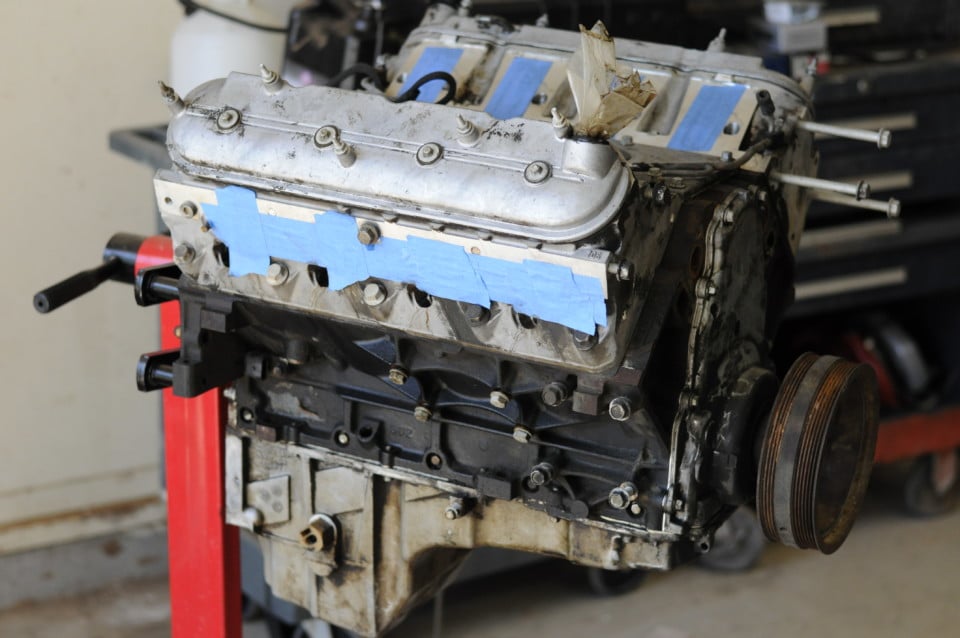
Unfortunatly our first engine purchase didn’t work out as the 5.3 was locked up. We needed to find another one and quick with a project deadline looming.
After the engine was mounted on the stand, we started tearing it apart and cleaning it. It was readily apparent the 5.3 had a rough life. After the engine was stripped down to the long block, we pulled the dipstick to see if the engine still had oil in the pan, which it did. It looked to be overfilled and this was our first clue that something was wrong. Next, we removed the drain plug. That is when the fun started. The oil was not overfilled, instead, the engine was filled with water that had accumulated during the thunderstorm season here in Texas.
At this point, we decided to yank the valve covers off and take a look at the top of the engine. We removed the rocker arms and pulled the completely rusted pushrods. By now, it was evident that we had some serious problems. We removed the spark plugs — which looked as bad as we expected — and proceeded to turn the balancer by hand. It didn’t budge. Even with a socket and a breaker bar, the engine wouldn’t spin over. It was game over for this little 5.3.
Since our test subject was locked up and our deadline was looming, we had to make a quick decision. Do we take a chance on another local individual or head out to the wrecking yard? We decided to call Wichita Falls Motorcars, one of our local salvage yards in town. We spoke to Ted Douglas, Owner of the operation, who was very helpful. He confirmed that the yard had several LS engines to choose from and the prices varied depending on what we needed. He then invited us out to the yard so that we could see the operation and the different engine options.
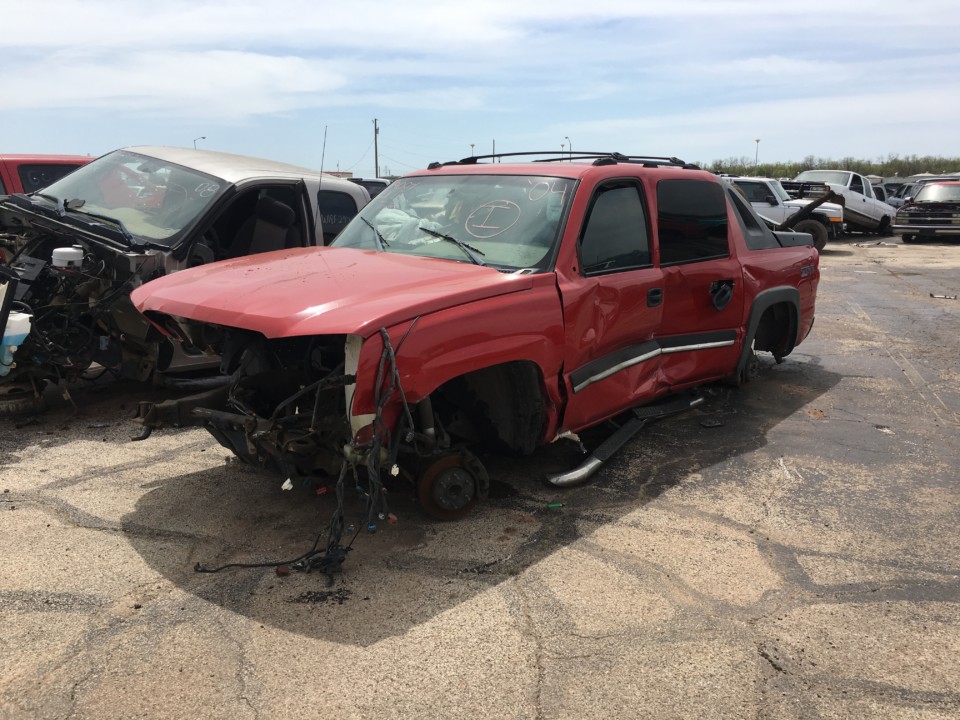
This was the donor vehicle for our new junkyard test mule, a 2004 Avalanche. Since Wichita Falls Motorcars keeps track of everything they remove, we were able to find the donor vehicle on the lot.
We discussed our needs with Ted, and he mentioned they had a relatively low mile 5.3 out of a 2004 Avalanche. The yard documents everything so we were able to find the vehicle that our engine was pulled from, including the year, make model and mileage. According to Ted, the Avalanche was a good running vehicle that he drove around the yard for a while before it was dismantled. This testament gave us peace of mind knowing that the engine would be fine for what we needed it to do. Ted also told us that if we had any issues, to bring it back because all of the engines that they sell come with a warranty. If anything happens to the power plant within 90 days, Wichita Falls Motorcars will either provide a replacement or refund the money. The warranty covers not only engines, but also rear axle assemblies, and transmissions.
Here are a few images are us loading the engine at the salvage yard. The image on the bottom right is the same engine after a good cleaning ready to hit the dyno at KPE Racing.
In the end, it would have been worth to pay a couple of hundred dollars more for an engine that is guaranteed with a warranty. Not only would this have saved us time, but it would also have saved us money in the long run.
If you don’t have the extra funds for an engine with a warranty, you can still find some good used ones out there. Here are a few tips for you to consider before making a purchase.
1. Make Sure The Engine Is Not Locked Up
If you can hear the engine run before you buy it, that is your best option. If not, take the tools you will need to turn it over manually. A 24mm socket and ratchet or breaker bar will typically do the trick. It should generally spin over with no issue. However, if it stops or won’t turn over, it’s not uncommon to find a severe problem when tearing the engine down.
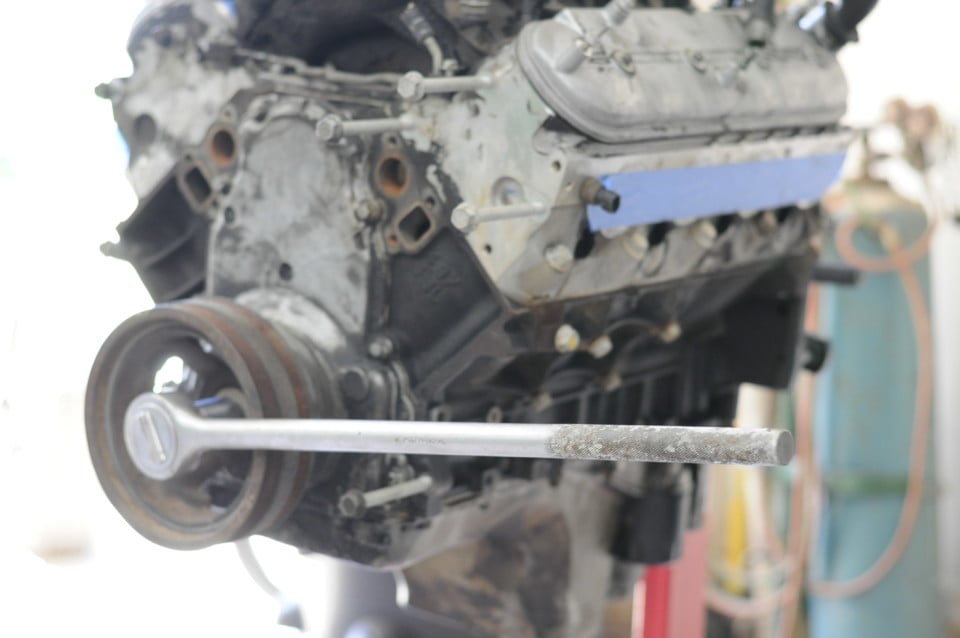
This engine that we purchased locally from a friend was completely locked up. Even with a monstrous ratchet, we couldn’t budge the crank.
2. Check The Oil
If it’s filthy, you may want to pass on a “good deal.” Some people will abuse vehicle maintenance and tend not to take care of things on a regular schedule. Improper maintenance can result in worn out bearings and cylinder walls, to name a few. If the oil looks new, this could also be a problem. A dishonest person might change to oil to keep you from finding a leaking head gasket or another problem. Just pay attention, and if it seems weird, something is probably wrong.
3. Ask Questions
The majority of people will know precisely what they have no matter if they bought it used or if they pulled it out of their vehicle. If they did replace the engine with another one, they should be able to tell you the problems or symptoms of the LS for sale. If they don’t want to talk about it, keep your eyes peeled for problems.
Be sure and ask about the mileage. It’s not uncommon to see these mills go for 200,000 – 300,000 miles. If this is the case, a rebuild might be in order adding more money and time to your build. If for some reason the seller doesn’t know the mileage, a quick peek in the intake manifold can tell you a lot. If the inside of the manifold is coated with a lot of buildup, it could point to high miles or excessive blowby, both of which show signs of a worn out engine.
If we had removed the valve covers on location, the pushrods would have told the tale of water in the engine. You can easily see the rust that developed as the engine sat outside.
The inside of the intake on this 5.3 was completely coated with oil and grime, which can signal a host of engine problems. You can also see it on the Exhaust Gas Recirculation (EGR) tube that inserts in the top of the intake manifold.
4. Check The Compression
A simple compression test will either confirm or eliminate the possibility of any problems the engine might have. This process can be done without using the starter on the engine but, the engine will need to be up off the ground enough to spin it over with a ratchet. While this process may be a little difficult, it can save you some headaches in the long run. YouTube has several videos that show you how to check the engine properly without the use of a starter.
5. Check The Spark Plugs
Spark plugs are a great tuning tool and can show you what’s going on in the engine. If you know what to look for, they can show you things like a dead cylinder, a rich condition, lean condition, and even detonation. Just make sure you have the tools which are nothing more than a ratchet and a 5/8 socket. Companies like E3 Sparkplugs normally have some really good information on their site regarding sparkplugs.
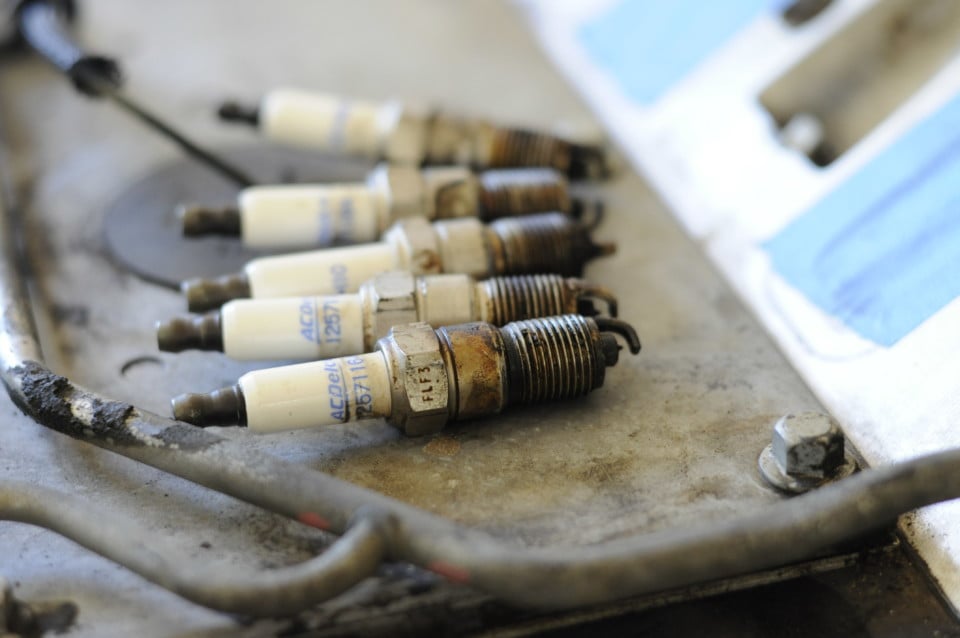
These spark plugs are far from ideal since they were covered in oil. The plugs can be discolored but you want them to be dry with the ground straps and porcelain still intact.
6. Educate yourself
Take the time to educate yourself, so you know the differences between all of the LS platforms. Nothing would be more upsetting than going and picking up a Vortec 5.3 and coming home with an LS4. A little bit of homework will keep you from buying something you don’t want. The 4.8 and 5.3 engines look identical but, there are ways to distinguish between the two if you know where to look. There are a lot of videos out there that can help you with any LS questions you might have. Here is a good example from Summit Racing.
7. Check The Exhaust Manifold Bolts
The LS engines are infamous for having broken header bolts, and they’re not easy to remove. This is another area we failed to look at on our botched engine purchase. We had a couple of bolts snapped off in the heads. This problem will also equate into more time and money spent trying to fix another predicament. To give you an idea of how to remove a broken bolt, check out this video.
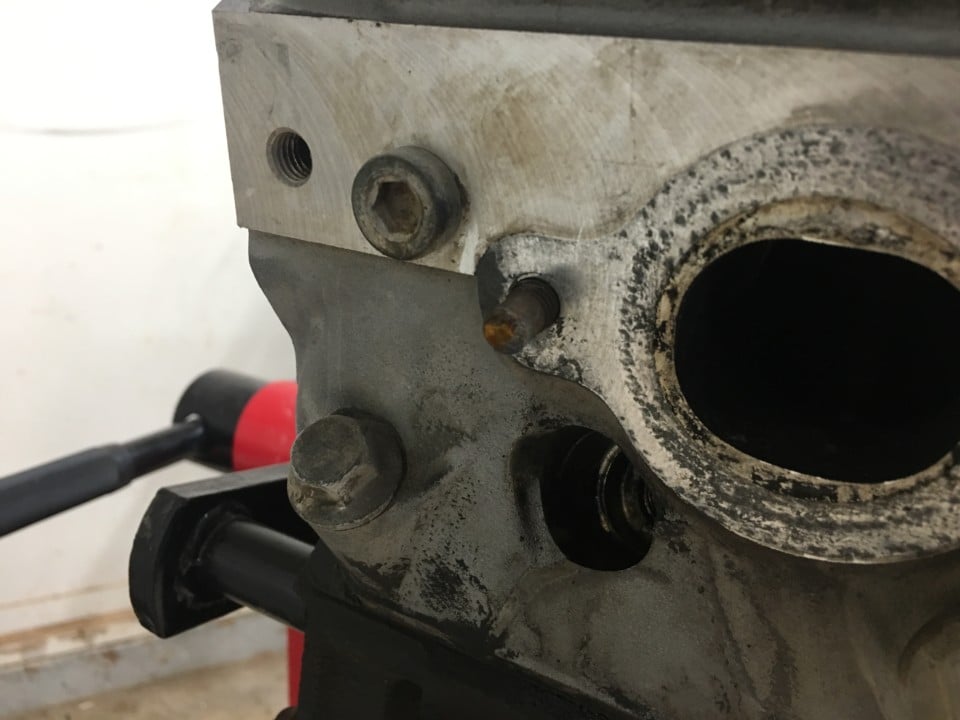
Here is one of the exhaust manifold bolts that was broken off in the head. You can search online and find a few different methods to remedy this problem. We are planning on heating it up and trying to remove it with a good pair of Vice Grips.
8. Visit A Salvage Yard
If you need an engine that is in good working order, we would suggest going to a salvage yard that offers a warranty. We are thrilled to report that with cam swap and valve springs, our 5.3 made good power and held over 90psi of oil pressure through the entire dyno session. It might have cost us a little more, but the salvage yard certainly offers some advantages.
Here’s the bottom line, If you are going to purchase through an individual, don’t do what we did. Even though we know better, we were in a hurry and took our buddies word that the engine was good. Just remember to pay attention, ask questions, and if it seems to good to be true, it probably is.
